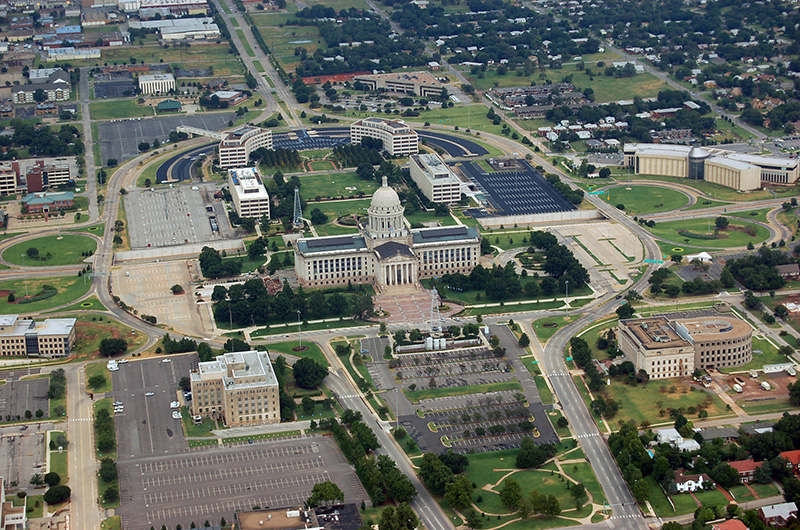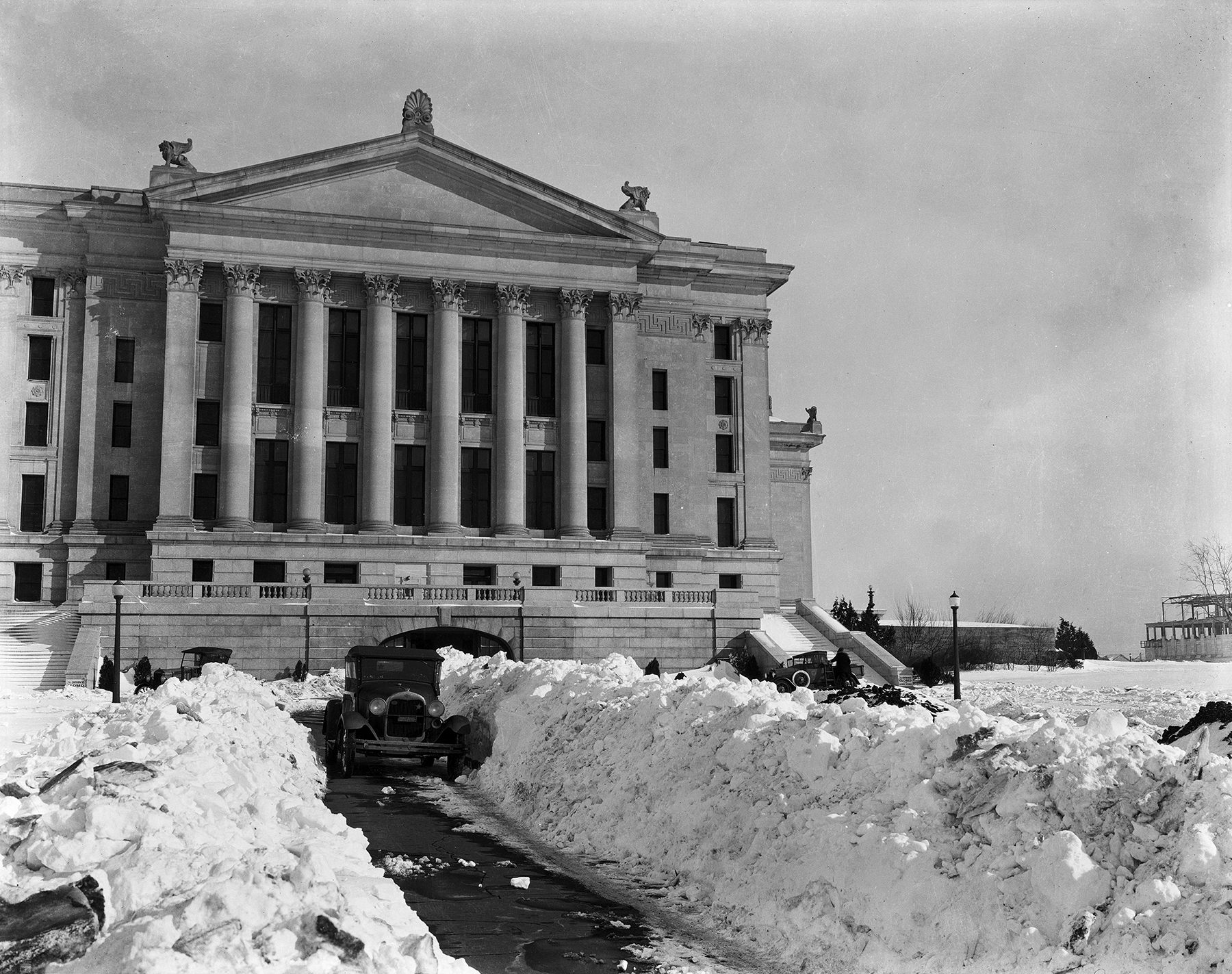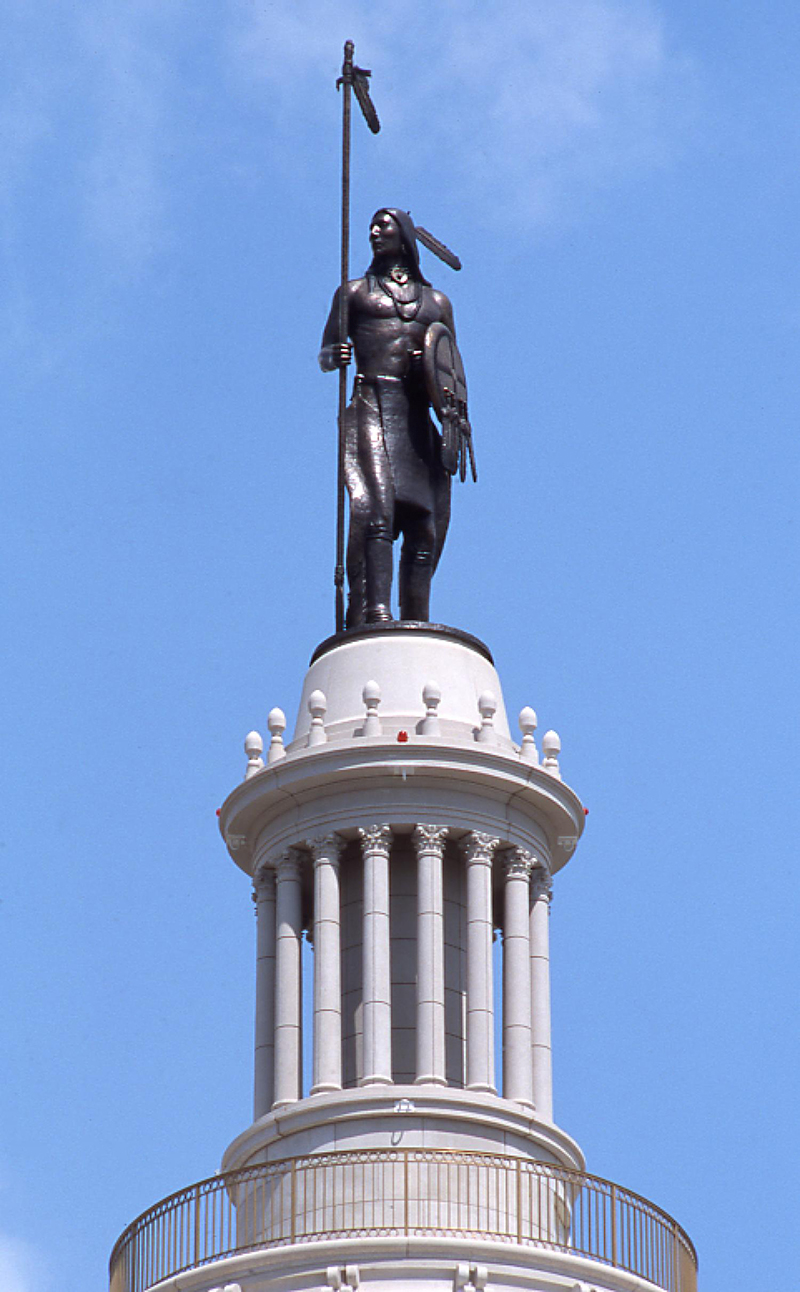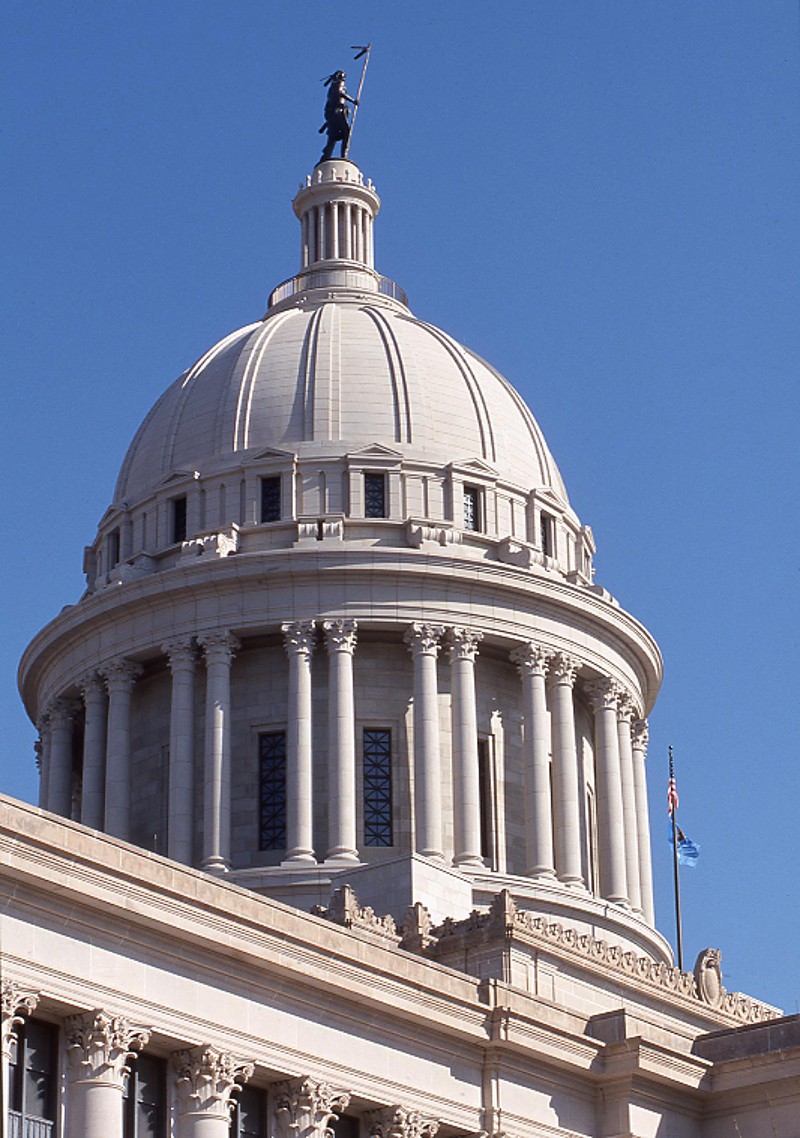
The Encyclopedia of Oklahoma History and Culture
OKLAHOMA CAPITOL.
After many years of anticipation and various commissions, construction on the Oklahoma Capitol building began after a ground-breaking ceremony on July 20, 1914. William F. Harn and John J. Culbertson had donated land for the site. Prominently located at the intersection of Northeast Twenty-third Street and North Lincoln Boulevard in Oklahoma City, the six-story building is classically styled in the grand Beaux Arts tradition. Completed on June 30, 1917, the building has a concrete foundation with pink and gray granite, covering the raised basement and water table. The granite was quarried in Johnston County, Oklahoma. The walls above the foundation are clad with Bedford limestone. The reinforced concrete building is T-shaped with the primary north and south wings being shorter and terminating in projecting porticoes. The porticoes align with Lincoln Boulevard, which divides to go on either side of the Capitol. A square rotunda rises from the building's center. The exterior and interior are highly ornamented, including stone lions on the corners of the copper roof. In recognition of the building's historic significance, it is listed in the National Register of Historic Places (NR 76001572).
The Capitol was designed by the Oklahoma City architectural firm of Layton and Smith and constructed by the James Stewart Company. As early as 1910 Solomon A. Layton and S. Wemyss Smith partnered with another notable Oklahoma City architect, James Watson Hawk. They were selected as designers. However, Hawk left the firm the following year to form his own company. Therefore, actual progress on the building, including final selection of the architect, was delayed for several years due to myriad politically influenced factors. Following the final selection of Layton and Smith, the firm engaged Jewell Hicks, an architect from Durant, to work with them on the plans. While Layton is often credited as the architect for the Capitol, unquestionably it was a collaborative effort of the firm. The 1914 architect's statement describing the building in detail was submitted to the State Capitol Commission by the firm and signed by S. Wemyss Smith.
The State Capitol Commission, consisting of Pat J. Goulding of Enid, Steve A. Douglas of Ardmore, and W. B. "Bill" Anthony of Marlow, also hired Edward P. Boyd to supervise the project in order to ensure that the state was not defrauded during the construction of the $1.5 million building. Boyd, educated as an architect and as a structural engineer, was employed as a construction engineer for the federal government and thus immune to local political pressure.
When the Layton and Smith firm presented its preliminary drawings to the commission in 1914, the plans did not include a dome. However, the building was designed to allow for a weighty dome to adorn the central square rotunda. The original commission was split on the desirability of the dome due to the high cost, and as completed, the Capitol was not domed. In 1998 House Bill 2827 created the Oklahoma Centennial Act, which formed the Oklahoma Capitol Complex and Centennial Commemoration Commission. The commission immediately began efforts to fund a $20.8 million dome project. Begun in 2001, the dome was dedicated on November 16, 2002. Its crowning element is a twenty-two-foot-tall bronze sculpture called The Guardian, created by artist and State Sen. Enoch Kelly Haney of Seminole.
For almost ninety years the Capitol housed all three branches of state government. In 2006 the judicial branch planned to move into the Oklahoma Historical Society building, located east of the Capitol on Lincoln Boulevard. The society was moving to the newly constructed Oklahoma History Center, directly east of the Capitol.











